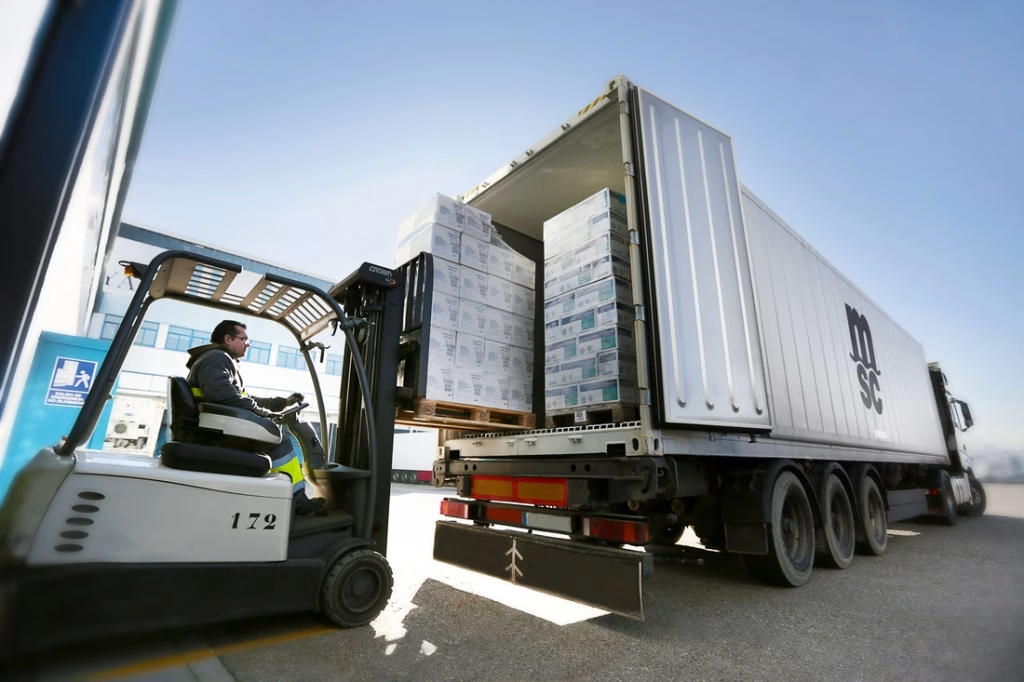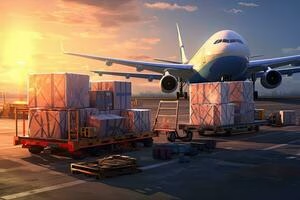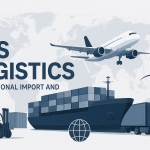Complete Guide to Cold Chain Logistics

What is Cold Chain Logistics?
A specialized area of supply chain management called “cold chain logistics” deals with handling, storing, and transporting goods that are sensitive to temperature. It guarantees that these goods stay within a predetermined temperature range from the producer or supplier to the end user. The term “cold chain” refers to all aspects of logistics, including temperature-controlled storage, cold rooms, insulated containers, refrigerated transportation, and monitoring systems that maintain the integrity of the product. Perishable foods, dairy products, medications, vaccines, chemicals, cosmetics, and some agricultural products are among the items frequently transported via cold chain logistics. Cold chain logistics are essential to international trade, food safety, and healthcare because they maintain precise temperatures that prevent sensitive materials from spoiling, degrading, or becoming contaminated. there is another type which is credent cold chain logistics, sfc cold chain logistics, integrated cold chain logistics, halls cold chain logistics etc
The Significance of Cold Chain Logistics
The importance of cold chain logistics cannot be overstated, especially in today’s global economy. With growing international demand for perishable goods and the globalization of pharmaceutical supply chains, cold chain services are essential for public health, food security, and economic development. In the healthcare sector, vaccines, insulin, and biologic medicines require strict temperature control. Even slight temperature deviations can render these products ineffective or hazardous. In the food industry, an effective cold chain helps reduce food waste, preserve nutritional value, and improve product shelf life. Without cold chain infrastructure, supply chains for dairy, seafood, fresh produce, and frozen foods would collapse. It also enables global trade in products that could not otherwise survive long-distance shipping.

Industries That Rely on Cold Chain Logistics
Multiple industries are heavily dependent on cold chain logistics:
- Pharmaceuticals & Healthcare: Vaccines, insulin, diagnostic kits, blood plasma, and biotech drugs.
- Food & Beverage: Frozen foods, meat, dairy, fresh produce, bakery items, ready-to-eat meals, and beverages.
- Agriculture: Export of fruits, vegetables, and horticultural items.
- Cosmetics & Chemicals: Certain skincare products, laboratory chemicals, and volatile compounds.
- Retail & E-commerce: Grocery delivery services, meal-kit companies, and direct-to-consumer frozen food brands.
The cold chain requirements for each of these industries vary, ranging from moderate refrigeration for dairy products to extremely low temperatures for pharmaceuticals.
How Cold Chain Logistics Works
Cold chain logistics works by maintaining the cold environment across four critical stages:
- Production and Packaging: Temperature-sensitive products are packed in insulated materials or thermal containers immediately after production.
- Storage: Products are placed in temperature-controlled warehouses or cold rooms based on their required range, such as 2–8°C (refrigerated), -18°C (frozen), or -80°C (ultra-cold).
- Transportation: Using refrigerated trucks, reefer containers, air cargo with climate control, or cold vans, products are transported with continuous temperature monitoring.
- Distribution and Delivery: Final delivery points, such as retail stores, pharmacies, or end-consumers, receive products via last-mile logistics with cold chain compliance.
Throughout the chain, sensors and monitoring devices ensure the correct temperature is maintained. Real-time data is transmitted to logistics managers for immediate intervention if any risk of deviation occurs.
Cold Chain Equipment and Infrastructure
To operate a successful cold chain logistics service, you need various types of specialized equipment and infrastructure, including:
- Reefer Trucks and Vans: Vehicles equipped with refrigeration units for land transport.
- Cold Storage Facilities: Warehouses with controlled temperature zones (frozen, chilled, ambient).
- Refrigerated Containers: Used in sea and rail freight for long-distance temperature-controlled shipping.
- Blast Freezers: Rapid freezing systems for meat, fish, and processed foods.
- Insulated Packaging: Thermal boxes, gel packs, dry ice, and phase-change materials used for short-term cold transport.
- Monitoring Systems: IoT-enabled sensors, GPS trackers, RFID tags, and cloud-based dashboards for temperature logging and alerts.
Cold Chain Logistics Advantages
- Product Safety and Quality: Ensures sensitive products reach their destination in usable condition.
- Extended Shelf Life: Reduces spoilage and prolongs freshness.
- Global Trade Enablement: Makes long-distance shipment of perishable goods viable.
- Regulatory Compliance: Meets international health, safety, and pharmaceutical transport standards.
- Cost Reduction: Lowers returns, waste, and rejections caused by product degradation.
- Customer Satisfaction: Guarantees better experience for end-users, particularly in healthcare and food delivery.
How to Start a Cold Chain Logistics Business
Starting a cold chain logistics business requires capital investment, market research, regulatory compliance, and operational know-how. Here are the key steps:
- Conduct Market Research: Identify industries with cold chain needs in your region (e.g., pharma, food retail, agriculture).
- Define Your Services: Decide whether you will offer storage, transport, packaging, or a full-service cold chain solution.
- Obtain Licenses and Certifications: Get regulatory approvals such as health authority permits, HACCP, GDP (Good Distribution Practices), or ISO certifications.
- Invest in Equipment and Infrastructure: Purchase or lease reefer vehicles, build cold storage units, and procure monitoring technologies.
- Build a Skilled Team: Hire drivers, warehouse operators, and technicians trained in cold chain handling and safety protocols.
- Develop Technology Systems: Use transport management systems (TMS), warehouse management systems (WMS), and temperature tracking software.
- Partner with Clients and Suppliers: Build B2B partnerships with food manufacturers, hospitals, vaccine suppliers, or e-commerce companies.
- Ensure 24/7 Support: Cold chain logistics demands real-time support and monitoring to avoid breakdowns or emergencies.
Starting in a growing region like the UAE, India, or Saudi Arabia can offer high demand with government support for logistics development.

Over 30% of global food spoilage occurs due to inadequate cold chain infrastructure. Efficient temperature-controlled logistics can significantly reduce waste and improve food security.
Best Companies in Cold Chain Logistics (Global and Regional)
Global Leaders:
- DHL Supply Chain: Offers global cold chain solutions with advanced tracking and compliance.
- Lineage Logistics: Operates hundreds of temperature-controlled warehouses in the US, Europe, and Asia.
- Americold Logistics: Specializes in food cold storage and distribution.
- Kuehne + Nagel: Offers pharma and perishable logistics worldwide with GDP-certified services.
- Maersk: Provides cold chain container shipping with visibility solutions.
Regional (UAE / GCC):
- Aramex: Offers cold chain delivery and warehousing in the Middle East.
- Emirates SkyCargo: Cold Chain service for pharma and perishables by air.
- Agility Logistics: Active in Kuwait, UAE, and Saudi Arabia with cold chain infrastructure.
- Al-Futtaim Logistics: Provides cold transportation across the UAE with compliance-focused operations.
- Gulf Agency Company (GAC): Provides integrated cold chain and reefer services across GCC.
Cold Chain Logistics in UAE and GCC
The UAE and broader GCC region are investing heavily in cold chain infrastructure to meet the demands of growing pharma imports, food security goals, and retail expansion. The UAE’s strategic location makes it a logistics gateway for Africa, Asia, and Europe. Free zones like JAFZA, Khalifa Industrial Zone (KIZAD), and Dubai South offer cold storage facilities and customs efficiency. During the COVID-19 pandemic, the Dubai government also established the Dubai Vaccines Logistics Alliance, showcasing the region’s expanding cold chain capabilities. The need for cold supply chains is increased by Saudi Arabia’s Vision 2030, which calls for large investments in agri-logistics and healthcare.
Facts and Statistics About Cold Chain Logistics
- The global cold chain logistics market is projected to reach USD 700+ billion by 2030, growing at a CAGR of over 15%.
- Nearly 30% of perishable food products globally are lost due to lack of effective cold chains.
- More than 80% of pharmaceutical products require some form of temperature control during transit or storage.
- Blockchain and IoT are revolutionizing real-time visibility in cold chains.
- The UAE has over 250,000 sq. meters of cold storage capacity across major logistics hubs.
- South Asia, Africa, and the Middle East are the fastest-growing regions for cold chain investment.
- Government incentives and FDI policies in logistics zones are making cold chain startups more viable in emerging markets.
- Use of AI in cold chain route planning is improving efficiency and lowering operational costs.
Challenges in Cold Chain Logistics
The cold chain sector still faces significant obstacles in spite of its expansion. These include high upfront capital costs, continuous fuel and energy expenses, inadequate rural infrastructure, a lack of qualified personnel, and regulatory obstacles. Sensitive cargo can be destroyed by equipment failure or power outages. Logistics companies also have to deal with data compliance regulations, cross-border transit hazards, and customs delays. Maintaining a constant temperature across various modes of transportation (truck, ship, and airplane) is still a logistical and technical challenge. Businesses must continuously invest in training, technological advancements, and emergency preparation if they want to remain competitive..
Future of Cold Chain Logistics
Data analytics, automation, and sustainability are influencing the direction of cold chain logistics. With CO2 and ammonia-based systems, the industry is transitioning to environmentally friendly refrigeration. To reduce emissions, electric reefer trucks and solar-powered cold rooms are being developed. Delivery routes are being optimized and cargo spoilage risks are being predicted with AI and machine learning. The need for strong and effective cold chains will only increase as the world’s population rises and consumer preferences shift toward fresh and healthful foods. Cold chain logistics will continue to be a vital component of national and corporate preparedness plans as pandemics and global health threats continue to impact supply chains.





